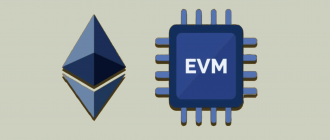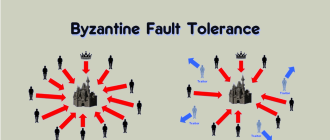Decentralized Finance, commonly known as DeFi, represents a revolutionary shift within the financial technology landscape, operating on blockchain technology. DeFi stands out because it offers financial services independently of traditional financial institutions like banks and exchanges. This innovation opens up new possibilities for both users and developers by providing tools for creating fully transparent, accessible, and interoperable financial services.

What is Decentralized Finance?
DeFi is an ecosystem of financial services built on blockchain technology that allows users to interact directly with each other, bypassing intermediaries. This ecosystem includes services such as lending, insurance, asset trading, and more. Unlike decentralized exchanges (DEXs), which primarily focus on asset exchanges, DeFi platforms offer a comprehensive range of financial services.
Historical Development of DeFi
Early Stages: The Emergence of Ethereum
- 2013: Vitalik Buterin proposed the creation of Ethereum, a platform that extended blockchain capabilities through the implementation of smart contracts.
- 2015: The launch of the Ethereum network marked a pivotal moment for DeFi, as smart contracts enabled developers to create complex decentralized applications, including financial tools.
The Rise of the First DeFi Applications
- 2017: MakerDAO was launched as one of the first DeFi projects, introducing the decentralized stablecoin DAI, which is pegged to the US dollar and backed by Ethereum collateral.
- 2017: The launch of the Compound platform allowed users to earn interest on their cryptocurrency holdings and take out loans.
Explosive Growth and the “Summer of DeFi”
- 2020: This period became known as the “Summer of DeFi,” characterized by explosive growth in the number and volume of assets in the DeFi space. For instance, the market capitalization of DeFi projects increased from a few billion to over $80 billion in just a few months.
- 2020: The launches of projects like Uniswap and Aave drew significant attention and investment, showcasing the potential of automated market makers and decentralized lending platforms.
Technological Advancements and Regulatory Recognition
- 2021 and beyond: The DeFi sector began actively developing and integrating second-layer solutions to enhance scalability and reduce transaction costs on Ethereum. Examples include Optimism and Arbitrum.
- 2021 and beyond: There was a rise in regulatory attention towards DeFi, including the development of standards and regulations governing decentralized financial activities on an international level.
This timeline illustrates how innovations in blockchain technology and the development of smart contracts have led to the establishment and rapid growth of DeFi, marking it as one of the most promising areas in the realm of digital finance.
How Decentralized Finance (DeFi) Works
Decentralized Finance (DeFi) operates on blockchain technology, utilizing smart contracts to automate financial transactions and manage assets. Below is an exploration of the core elements and mechanisms that facilitate the operation of DeFi systems.
Smart Contracts
Smart contracts are pieces of code stored on the blockchain that automatically execute, control, or document legally relevant events and actions according to the terms of a contract. For instance, on the Ethereum platform, smart contracts are written in Solidity and operate within the Ethereum Virtual Machine (EVM), ensuring that the terms are executed without the need for third-party intervention.
Decentralized Applications (DApps)
DApps are applications that run on a blockchain and interact seamlessly with smart contracts. They provide the user interface and interaction logic with DeFi platforms, facilitating operations such as loans, insurance, cryptocurrency trading, and more. These apps enhance user engagement and make complex financial services more accessible to the general public.
Automated Market Makers (AMM)
AMMs are mechanisms used in decentralized exchanges (DEXs) to provide market liquidity by automatically matching buyers and sellers. Systems like Uniswap and Sushiswap are examples where liquidity is generated by user-contributed pools. Contributors deposit their assets into these pools and in return, receive transaction fees as rewards.
Oracles
Oracles are external services that supply real-world data to DeFi smart contracts. This data might include current exchange rates or the prices of assets, which are crucial for the functioning of products such as synthetic assets and derivatives. Oracles help bridge the gap between on-chain and off-chain worlds, ensuring that DeFi products react accurately to real-world events.
Tokenization of Assets
Tokenization involves converting the rights to an asset (such as currency, securities) into digital tokens on a blockchain. This allows traditional financial instruments to be integrated into the DeFi ecosystem, facilitating their interaction with smart contracts. Through tokenization, a wider range of assets can be made available on DeFi platforms, enhancing their utility and appeal.
Consensus Algorithms
These are the foundation for maintaining the integrity and security of transactions on the blockchain. DeFi utilizes various types of consensus mechanisms, such as Proof of Work (PoW) and Proof of Stake (PoS), to ensure data consistency across network nodes.
Combining these technologies, DeFi creates a robust, secure, and scalable foundation for decentralized financial services, enabling users to perform complex financial operations without needing to trust a centralized intermediary. This framework not only improves security but also increases transparency and efficiency in financial transactions.
The Uniqueness of Decentralized Finance (DeFi)
Decentralized Finance (DeFi) offers several key technological and operational advantages that distinguish it from traditional financial systems:
Independence from Centralized Institutions
Unlike traditional finance, where banks and other financial institutions act as intermediaries and regulators, DeFi relies on blockchain technology to facilitate decentralization. This means transactions occur directly between users without the need for intermediaries, thereby reducing the risks associated with centralized control and human errors.
Programmability
Smart contracts, particularly those running on blockchains like Ethereum, enable the creation of complex financial instruments that can be automatically executed according to embedded algorithms without any external intervention. This includes automated loans, insurance, derivatives, and much more, providing a high level of efficiency and automation.
Interoperability
DeFi platforms are designed to interact seamlessly with each other. This interoperability means that assets and data can freely move between different DeFi applications, creating complex financial services and ecosystems that can scale and adapt to diverse user needs.
Liquidity and Accessibility
DeFi protocols often offer mechanisms to create liquidity, allowing users to earn interest on their assets by contributing them to liquidity pools. These mechanisms not only increase overall market liquidity but also provide users with opportunities to generate returns on their investments.
Transparency and Security
All transactions within DeFi are recorded on the blockchain, ensuring a high degree of transparency and auditability. As transaction data is publicly accessible, it enhances trust and reduces the risk of fraud.
Adaptability to Regulations and Standards
Despite its decentralized nature, DeFi platforms can be adapted to comply with regulatory requirements of different jurisdictions, including the integration of user identification (KYC) and anti-money laundering (AML) mechanisms.
These features make DeFi not just an alternative to traditional finance but also lay the foundation for a more global, accessible, and resilient financial system.
Platforms and Products in Decentralized Finance (DeFi)
To understand which platforms and products fall under Decentralized Finance (DeFi), consider the following criteria:
Criteria for DeFi Platforms
- Blockchain Utilization: The platform must be built on a blockchain that enables the use of smart contracts to automate financial operations.
- Absence of Centralized Control: The management of the platform should be decentralized and often distributed among its users, frequently through mechanisms such as Decentralized Autonomous Organizations (DAOs).
- Financial Services: The platform must offer traditional financial services such as lending, insurance, and asset trading without intermediaries.
- Accessibility and Openness: Any user with internet access can use the services without prior verification or approval.
Examples of DeFi Platforms and Their Products
Uniswap
- Type: Automated Market Maker (AMM).
- Description: Allows users to trade ERC-20 tokens on Ethereum without centralized intermediaries by utilizing liquidity pools contributed by users.
Aave
- Type: Decentralized Lending Platform.
- Description: Users can lend or borrow various cryptocurrencies, earning or paying interest. Aave also offers innovative products like “flash loans,” which are short-term, collateral-free loans.
Compound
- Type: Lending and Borrowing Platform.
- Description: Similar to Aave, Compound enables users to earn interest by supplying their cryptocurrencies to a liquidity pool and to take out loans against their crypto holdings.
MakerDAO
- Type: Decentralized Credit Platform.
- Description: Its primary product is the stablecoin DAI, which is backed by Ethereum collateral. Users can generate DAI by depositing their ETH into a smart contract.
- Type: Synthetic Asset Creation Platform.
- Description: Allows the creation and trading of synthetic versions of real-world assets such as currencies, stocks, indices, and commodities, using cryptocurrencies as collateral.
Curve Finance
- Type: Decentralized Exchange for Stablecoins.
- Description: Specializes in swaps between stablecoins with minimal slippage, providing some of the market’s best conditions for exchanging like-for-like assets.
These platforms provide users the opportunity to participate in financial operations that were previously only available through traditional financial institutions, but are now globally accessible with minimal fees and no intermediaries.
Advantages and Disadvantages of Decentralized Finance (DeFi)
Decentralized Finance (DeFi) introduces new opportunities and challenges that are significantly different from those in traditional financial systems. Let’s delve deeper into the key advantages and disadvantages of DeFi.
Advantages of DeFi
- Accessibility
- Users from around the world can access DeFi platforms regardless of their geographical location or banking infrastructure. This is particularly important for residents of countries with limited access to financial services.
- Transparency
- All transactions are recorded on a public blockchain, providing a high level of transparency. Users can verify any transaction and ensure the terms of contracts are being met.
- Interoperability
- DeFi platforms enable users to easily move assets between different applications without the need to close positions or convert assets through centralized exchanges.
- User Autonomy
- Users manage their funds using private keys, which reduces the risks associated with holding assets on centralized platforms.
- Financial Product Innovation
- DeFi offers new forms of financial instruments such as insurance, derivatives, and index funds, which were previously unavailable or not flexible enough in traditional finance.
Disadvantages of DeFi
- High Risk Level
- DeFi operations can carry a high level of risk due to the volatility of cryptocurrencies, errors in smart contracts, and the lack of deposit insurance.
- Complexity of Use
- Despite interfaces that simplify interactions, many DeFi products can be complex to understand and use, especially for those new to cryptocurrencies.
- Regulatory Risks
- DeFi falls under the scrutiny of regulators, which could lead to the introduction of new restrictions and rules affecting the accessibility and functionality of platforms.
- Scalability
- In its current state, blockchain networks like Ethereum can suffer from scalability issues, leading to high fees and slow transactions during periods of high demand.
- Lack of Insurance
- Deposits in DeFi are not insured, unlike traditional bank accounts, increasing the risk of losses in the event of failures or attacks on the platform.
In conclusion, while DeFi offers many advantages over traditional financial systems, the existing risks and challenges require careful consideration and management by users.
Development Prospects for Decentralized Finance (DeFi)
Decentralized Finance (DeFi) is still in its early stages but has already shown significant potential for growth and innovation. Let’s explore the key directions and factors that could shape the future of DeFi.
Improving Scalability
One of the main limitations for DeFi is the scalability of blockchain networks, such as Ethereum, which is used by most DeFi applications. Efforts to address this issue focus on the development and implementation of second-layer solutions (Layer 2), such as Optimistic Rollups and ZK-Rollups. These solutions enable transactions to be processed off the main chain, significantly increasing throughput and reducing transaction costs.
Integration with Traditional Finance
DeFi aims to create closer integration with traditional financial systems. This may include developing new exchange-traded products that comply with regulatory requirements and creating bridges between cryptocurrencies and traditional currencies. Such innovations will facilitate institutional investors’ interaction with DeFi, expanding access to capital and increasing market liquidity.
Enhanced Focus on Security
As assets managed by DeFi platforms continue to grow, efforts to ensure the security of these platforms become increasingly critical. DeFi developers are working on improving code audits, enhanced verification of smart contracts, and implementing insurance products designed to protect users from losses in case of failures or attacks.
Expansion of Asset Types and Services
The DeFi sector will continue to expand the range of available financial instruments and services. This includes the creation of synthetic assets that can represent not only cryptocurrencies but also traditional financial instruments such as stocks, bonds, and commodities. The popularity of insurance and pension products within DeFi is also expected to grow.
Improving User Experience
To attract a broader audience, DeFi needs to enhance the user interface and simplify the processes of managing assets and interacting with platforms. This could include developing more intuitive interfaces, improving mobile accessibility, and integrating with traditional payment systems.
Compliance with Regulatory Requirements
Finally, DeFi will need to adapt to a changing regulatory landscape. Developing mechanisms to comply with anti-money laundering (AML) and know your customer (KYC) requirements, while maintaining the key principles of decentralization, will be crucial for the long-term success and legitimacy of DeFi.
These prospects indicate that DeFi has the potential not only to change the landscape of financial services but also to shape a more global, accessible, and efficient financial system.
Conclusion
DeFi represents a powerful alternative to traditional financial systems, offering innovative solutions for all participants in the financial market. Based on blockchain technologies, DeFi provides flexibility, security, and accessibility of financial services, making them available to any user anywhere in the world.







